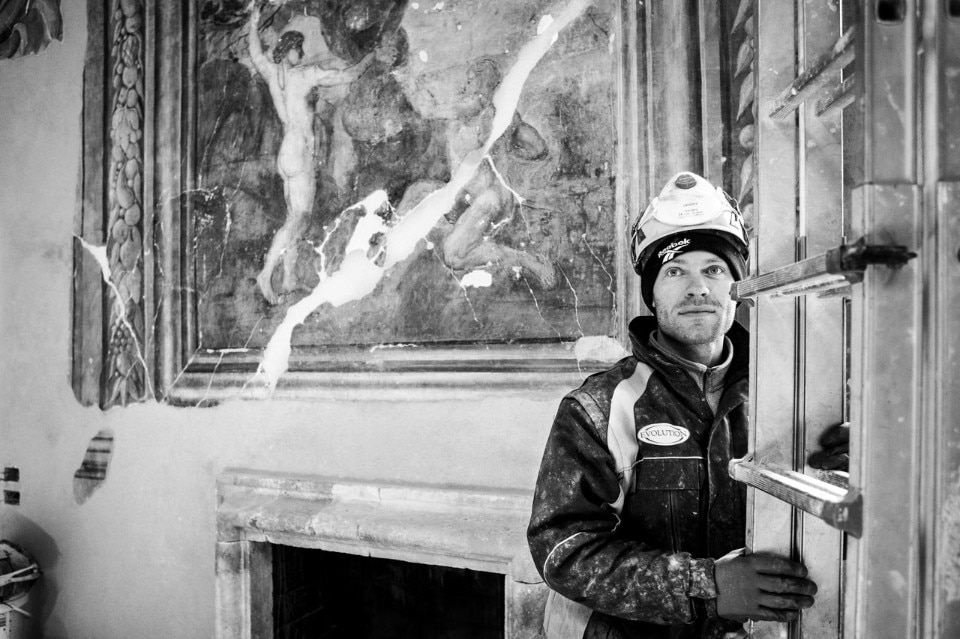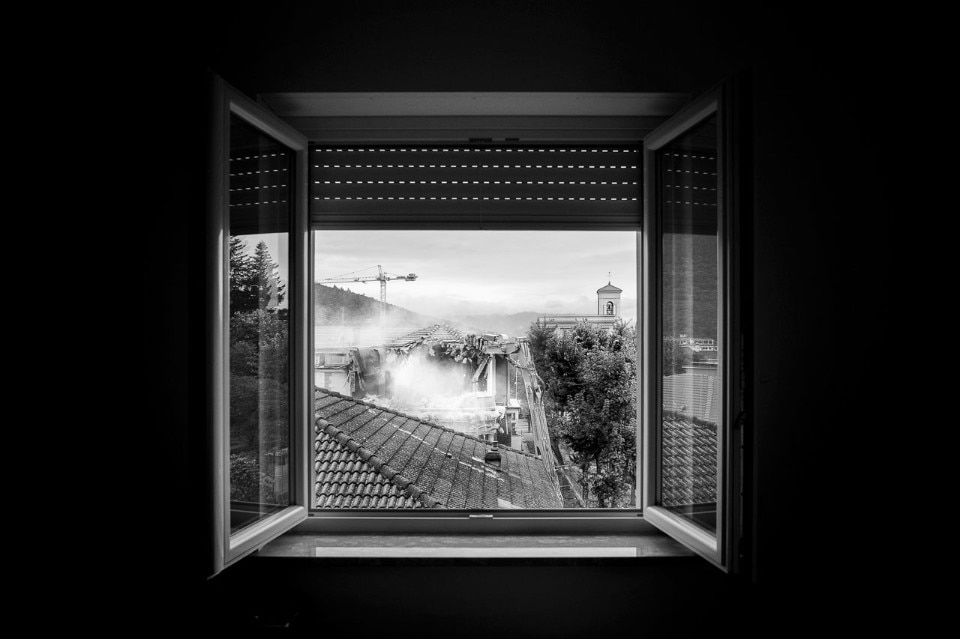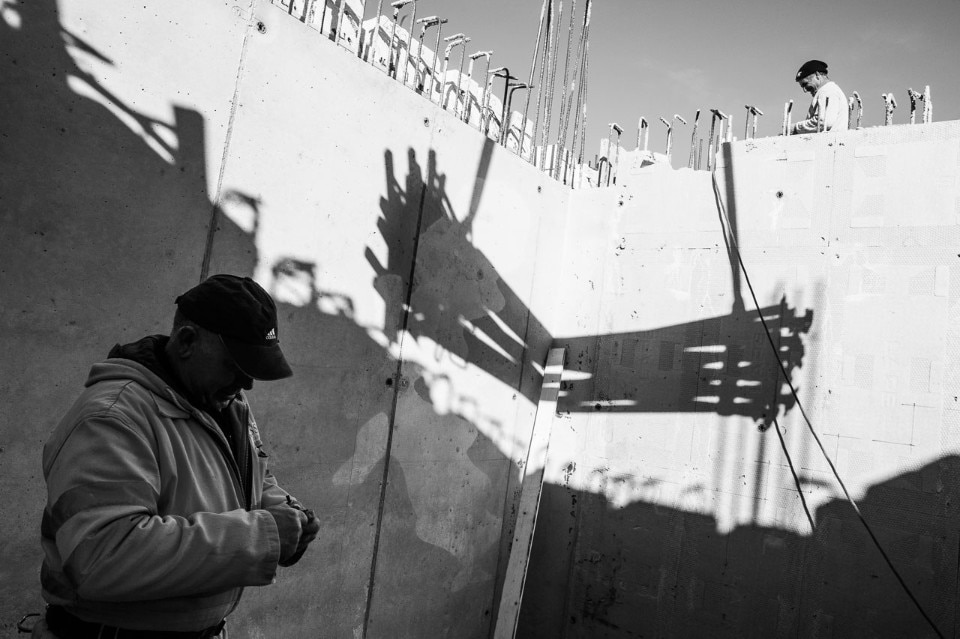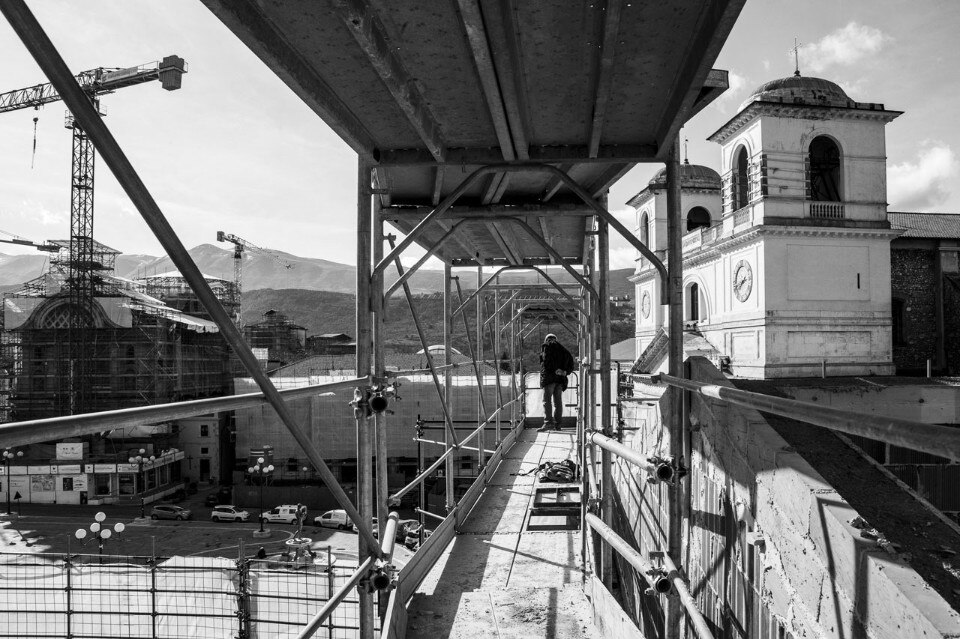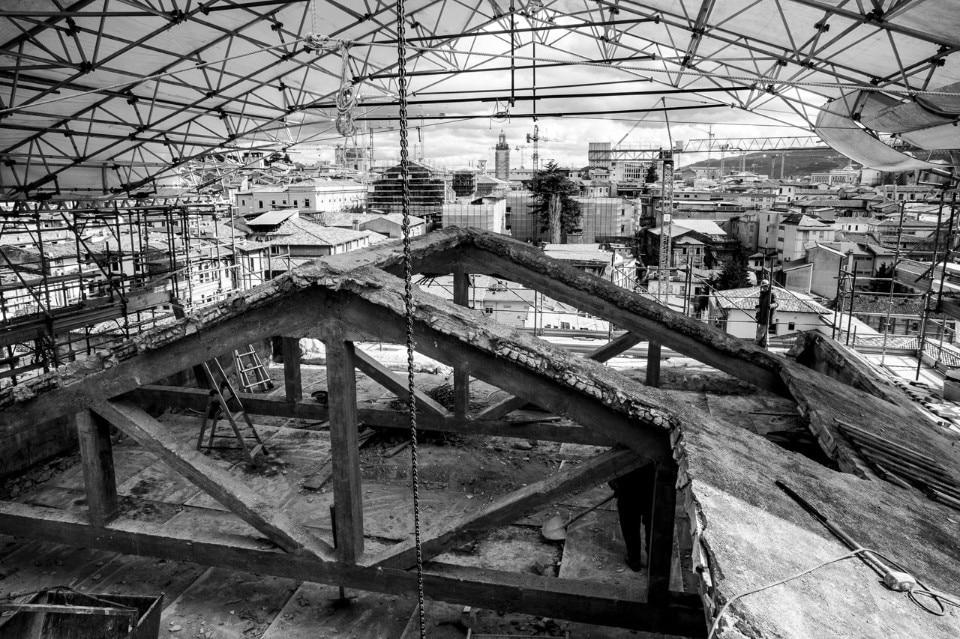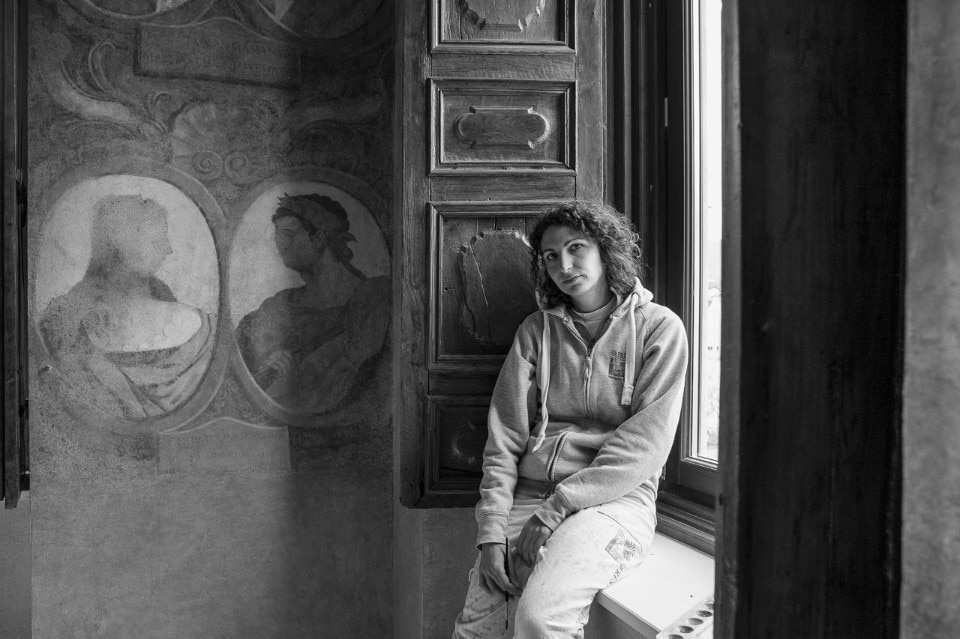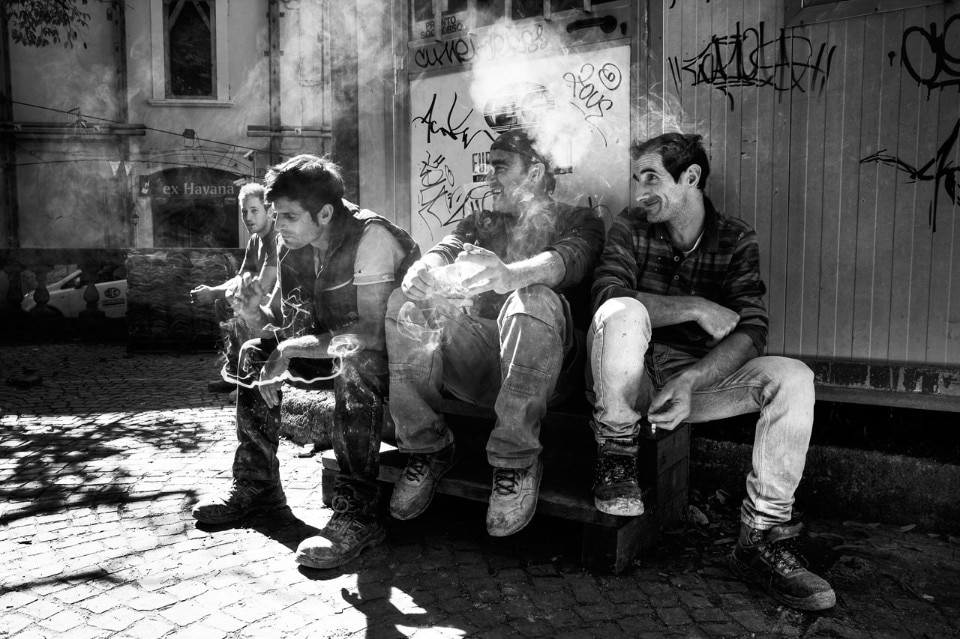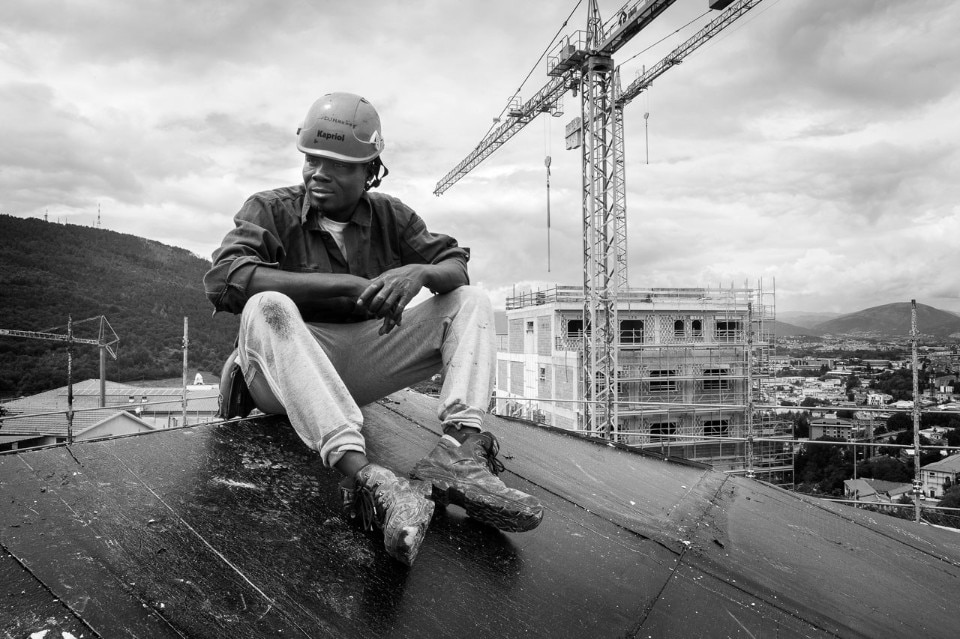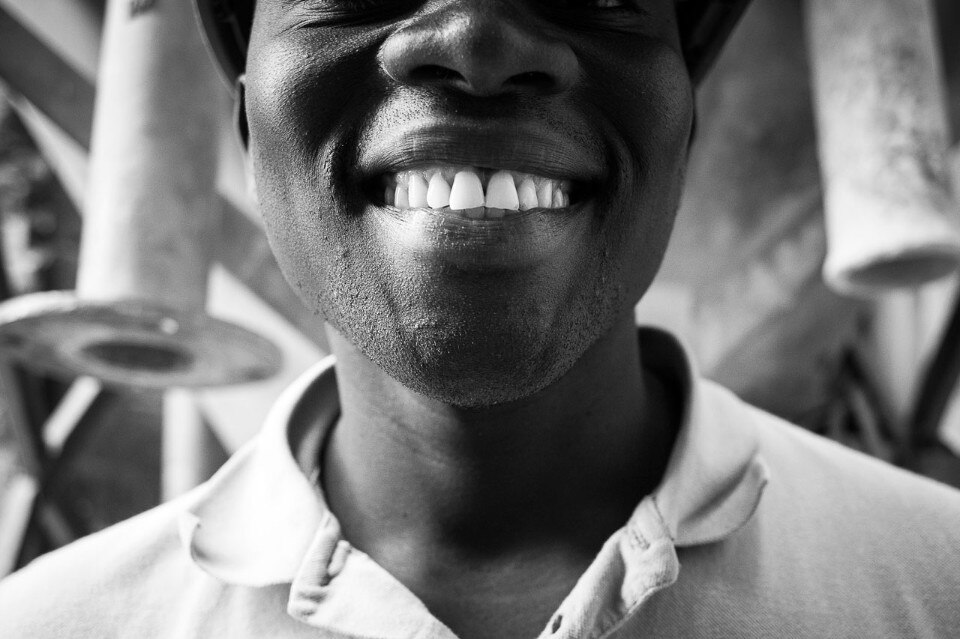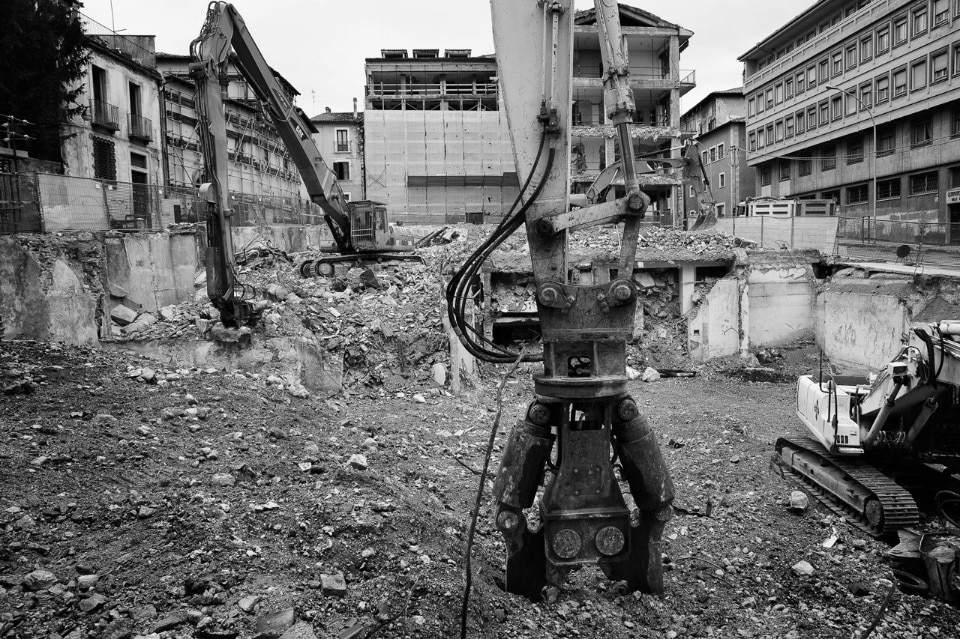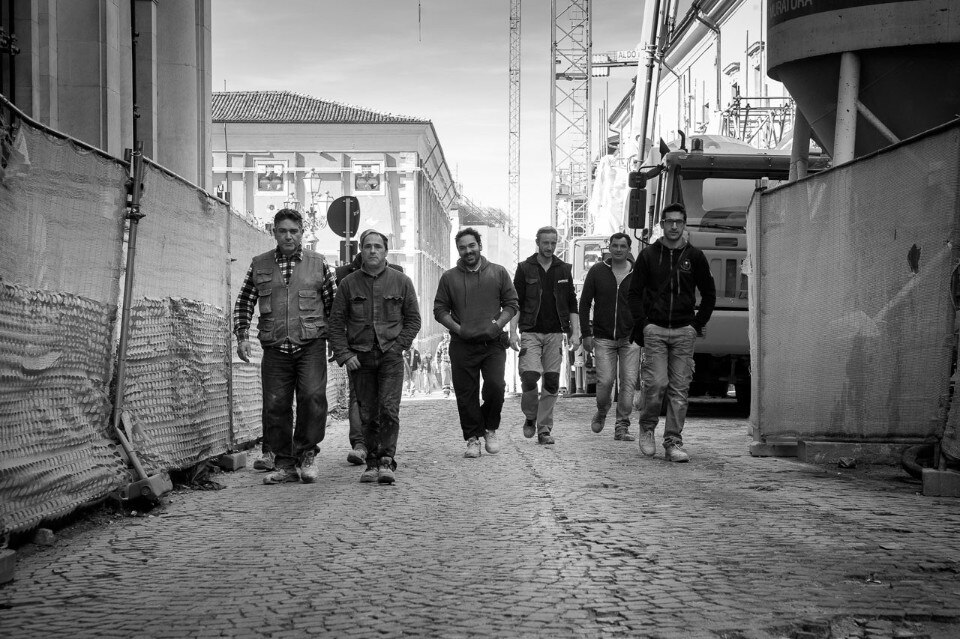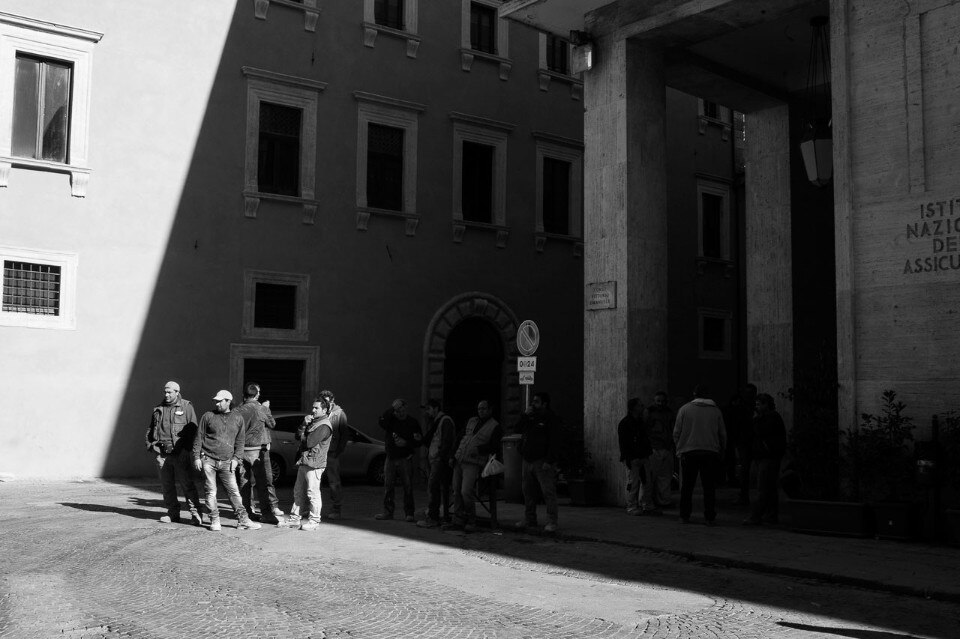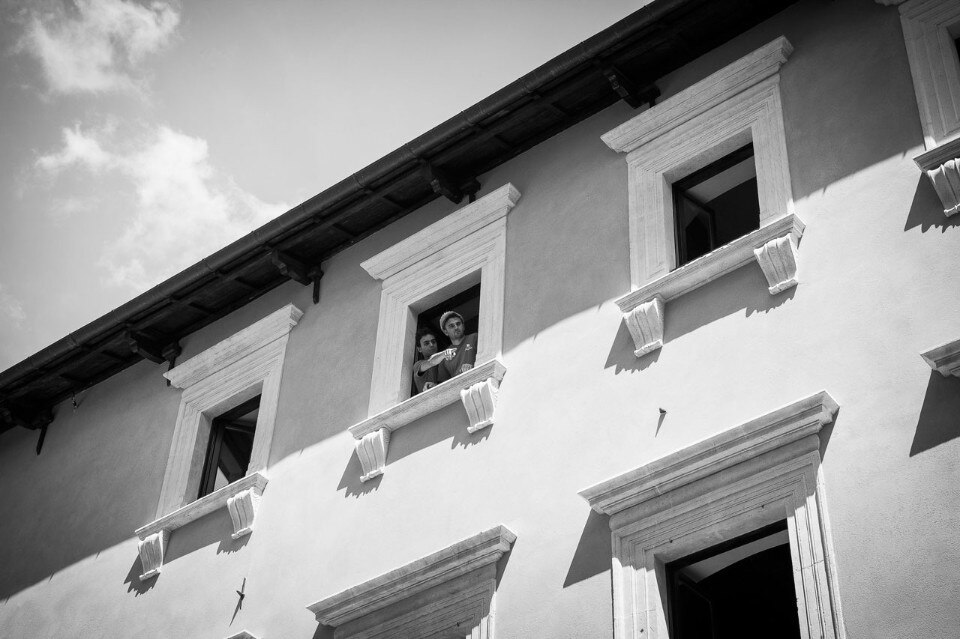“I don’t know why, but it always starts again with sound.” Cranes, bulldozers, pneumatic drills, diggers – in 2014, five years after the earthquake of 2009 that devastated L’Aquila, the town’s historic centre began to be rebuilt. “Hearing the sound was the difference. L’Aquila’s historic centre, which was silent and deserted, came to life again. We’d closed one phase, the most difficult, and we’d started a new one: we were taking back the historic centre,” explains Claudia Pajewski (born 1979), a photographer who divides her time between Rome, Milan and L’Aquila. Her new photography project Le mani della città (The Hands of the City), edited by Michela Becchis, has just been published by Drago Publishing. The book tells the story of the reconstruction of L’Aquila in 73 images shot between 2014 and 2017. It will be launched on 28 February at 6.30pm in the Gran Sasso Science Institute, which – together with FILEA CGIL – has supported the publication financially.

Why did you photograph the reconstruction?
Before the restoration of the historic centre, L’Aquila was an abandoned city. The inhabitants had been divided into two groups: one that hadn’t lost their connection to the city, and one that hadn’t been able to return. For us natives of L’Aquila, seeing the workers and conservators arrive was something to cherish – as was, of course, hearing the sounds again.
Your work documents the transformation of an extraordinary place.
The photographs show the repossession of the urban fabric. It’s the story of an empty space that was then filled. I’ve always been fascinated by cities, discovering them, moving through them. I tend to see a city as a body in which the historic centre is the heart. It’s the emotional centre, the most important part. Without it, a city’s identity collapses. Calling the book Le mani della città pursues the metaphor of the body. It sees the workers themselves as the hands of the city. There are parallels between the people who live there and the structures that represent the place.
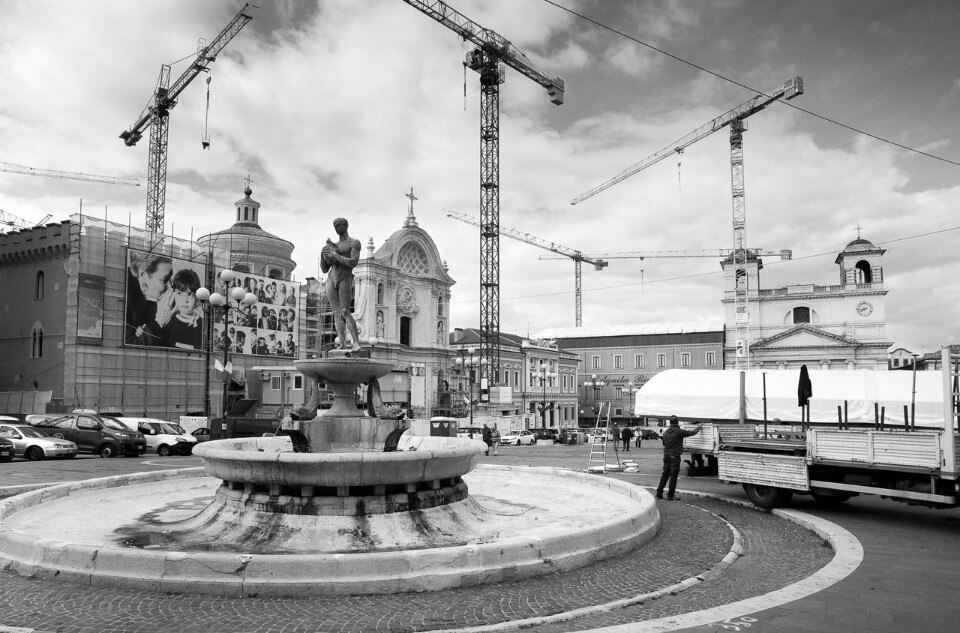
The title of the book recalls the 1963 film by Francesco Rosi Le mani sulla città (Hands Over the City), which exposed the speculative building and corruption that, starting with Naples, was a social and environmental reality in 1970s Italy.
Many of those living in L’Aquila watched the film again when the building speculation started around the reconstruction of the “new town”, the suburban area. The suspension of the laws relating to the tender procedures led to enormous speculative building, with crazy prices per square metre. The script was the same, though the tone was different. The title evokes a theft: I wanted to tell another story.
The photographs in your work are in black and white. What effect does this choice have?
I was trained on black and white film photography by the photographer Sebastiana Papa. For me, it strips away the superfluous – it gets to the essence. It works, in the present, as a sort of historical memory of a city being transformed at an incredible pace.
According to Italian immigration figures, L’Aquila has more migrants per head than any other place in Italy. It’s also the country’s first multicultural building site. You show the lines on the workers’ faces, their teeth, their hands. Who built the town?
The reconstruction speaks to migration and the jobs that the migrants do. Italy is made up too of these people, for whom migration is a condition. There weren’t just workers from Eastern Europe or Africa. Alongside them on the building sites were workers commuting from Puglia and Sicily. They cooperate, and have cooperated, with each other.
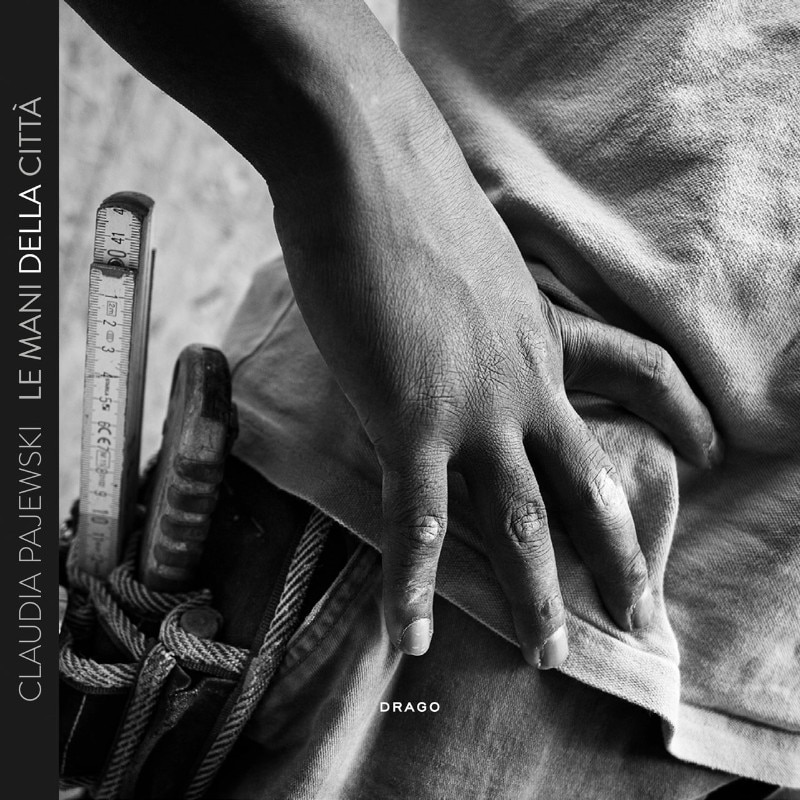
L’Aquila owes its original structure to an ideal of a city inspired by Jerusalem. It’s a place that’s at once sacred and battered. How did the reconstruction happen?
After the earthquake, the houses fell down because of bad construction. History – Italy’s ancient problem – repeated itself in Amatrice. The architectural reconstruction followed strict building regulations. When the work is complete, L’Aquila will be the first historic earthquake-resistant city in Italy.
In the introductory essay, Maria Giovanna Musso, an anthropologist at the Sapienza University of Rome, writes, “photography is a battle that involves, silently and in fractions of a second, the worlds, beliefs, expectations, emotions and desires that the photographer and the subject do not even know they have”.
It was wonderful to recognise myself in the text, above all in the relationship of equality between photographer and subject. The camera can be a weapon if it’s used badly. Musso has grasped the quest for a level playing field, for the empathy that’s a precondition in any encounter.
Do you have a favourite image from the series?
A very personal one, which was taken from the window of the bedroom where I grew up, inside a damaged apartment block that was demolished and then rebuilt. Then there’s a section on the art conservators. The restoration of the artistic treasures in the buildings is the most moving part. It symbolises a grace that would otherwise be missing from the reconstruction.
One of the most iconic projects is the reconstruction of the Auditorium del Parco, the brainchild of Claudio Abbado and designed by Renzo Piano. Alberto Savino wrote, “Music is the essential element in education. There can be no civilisation without music.” We’re back to the sound.
What the city lost most was its social fabric. It was essential to recover those missing spaces where culture was made. In architecture, that’s the one thing that’s essential to have.
- Book title:
- Le mani della città. Un viaggio fotografico nella ricostruzione di una città italiana distrutta
- Author:
- Claudia Pajewski
- Edited by:
- Michela Becchis
- Publisher:
- Drago Publishing
- Year:
- December 2017
- Pages:
- 96
- Price:
- 30 €


